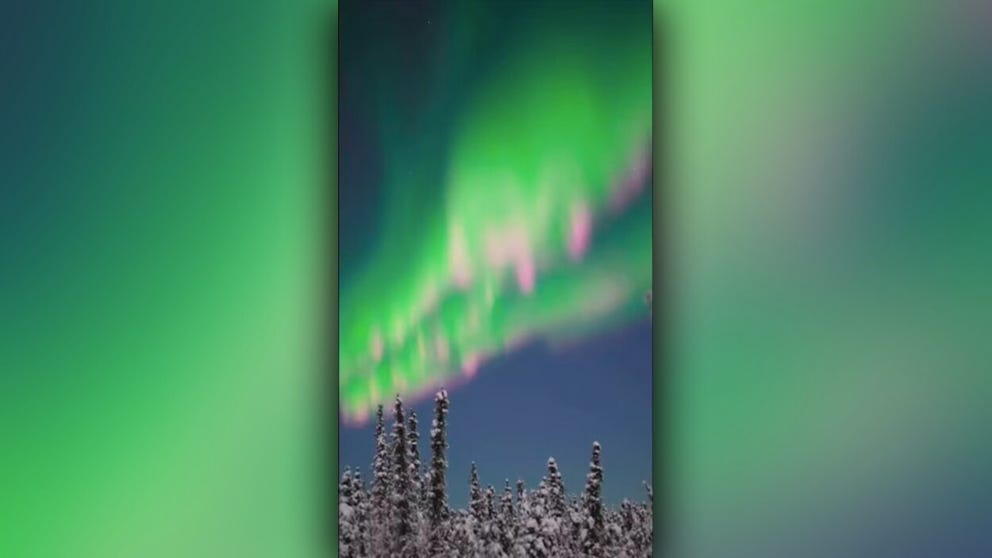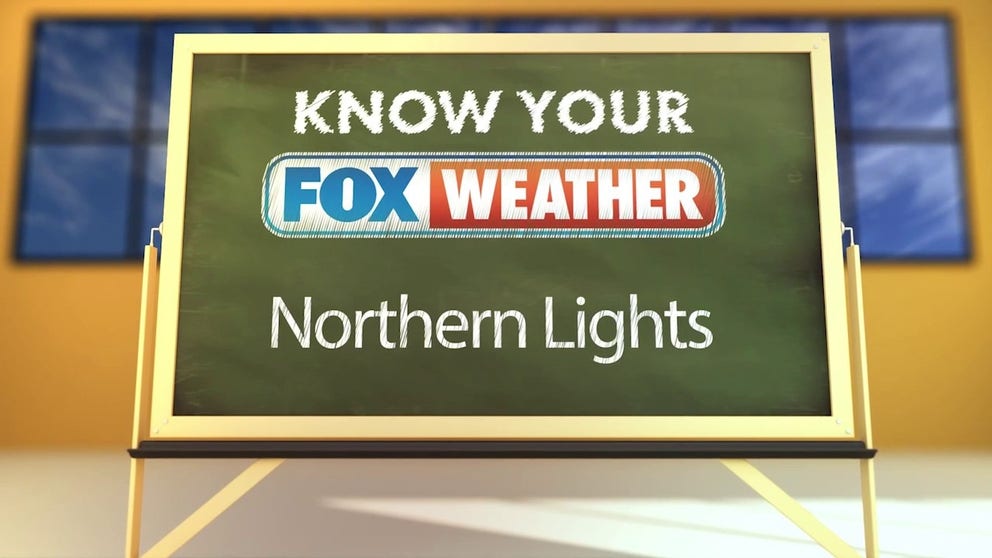Mesmerizing video: 'Watermelon' aurora dances over Alaska
The solar wind excited gasses in the Earth's atmosphere creating a colorful, dancing aurora over Fairbanks.
Watch: 'Watermelon' aurora dance over Alaska
Fairbanks, Alaska sky watchers were treated Sunday night to a colorful aurora dancing over the freshly fallen snow.
FAIRBANKS, Alaska – Skywatchers in Fairbanks were treated to an ethereal light show Sunday as the Northern Lights danced above freshly fallen snow.
"These red and green colors together look like watermelon, so I call it watermelon aurora," photographer Vincent Ledvina told Storyful.
Pale green is the most common color for auroras. Red is rarer, according to NOAA.
What is an aurora?
Auroras are the reaction of the Earth's atmosphere to the energized particles in the solar wind and solar storms.
"When the fast-moving electrons, traveling nearly 1/10th the speed of light (44 million mph), collide with the atoms and molecules in Earth’s upper atmosphere (above 60 miles), they transfer energy to the atmosphere, which excites the atom or molecule to higher energy states," explained the Space Weather Prediction Center.
The speedy electrons follow Earth's magnetic field lines, which generally center the aurora around the magnetic North and South Poles.
SOLAR SUPERSTORM COULD ‘WIPE OUT THE INTERNET’ FOR WEEKS OR MONTHS, SCIENTIST SAYS
Know Your FOX Weather: Northern Lights
FOX Weather meteorologist Stephen Morgan breaks down the Northern Lights and how you can see them.
The electrically charged particles excite gas atoms. The gas atoms and molecules release energy in the form of light to "calm down" or return to their ground state. Nitrogen gas collisions produce blue and purple hues, according to the Canadian Space Agency. Earth's atmosphere is 78% nitrogen and 21% oxygen.
"The production of the colors is very similar to what you see in a neon sign," says Don Hampton, a researcher at the University of Alaska, Fairbanks. "It's basically just an electrical current."
Colors of the Northern Lights
Green auroras generally glow 60 to 100 miles above the planet when the solar wind excites the oxygen, according to the CSA. Higher in the sky, 190 to 248 miles up, oxygen glows red.
7 THINGS TO KNOW ABOUT THE NORTHERN LIGHTS
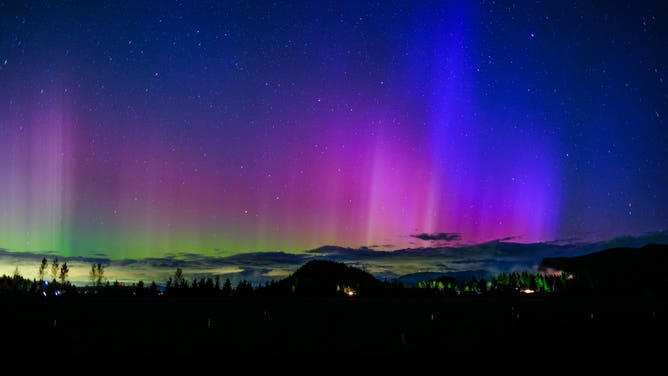
FILE - Northern Lights seen in Enumclaw, Washington.
(Jeffrey Knesebeck, Enumclaw, Wash.)
"Occasionally, the lower edge of an aurora will have a pink or dark red fringe, which is produced by nitrogen molecules at altitudes of around 100 km (62 miles)," stated the CSA.
Where to go to see the aurora
The best bet for spotting the Aurora Borealis is in the polar regions like Alaska, Canada and Scandinavia. The lights edge south with more energy hitting the atmosphere, like a solar flare or coronal mass ejection.
"Fairbanks really is the best place in the U.S. to go look at auroras," Hampton said. "Almost any night, if it's clear, you'll be able to see some activity; it's very rare that we see nothing. Getting (the aurora) right overhead is about half the time."
NOAA's Aurora Dashboard by the Space Weather Prediction Center does not expect impressive geomagnetic storms over the next few days.
THE DAY THE NORTHERN LIGHTS COVERED THE PLANET: HISTORY OF EARTH'S GREATEST SOLAR STORMS
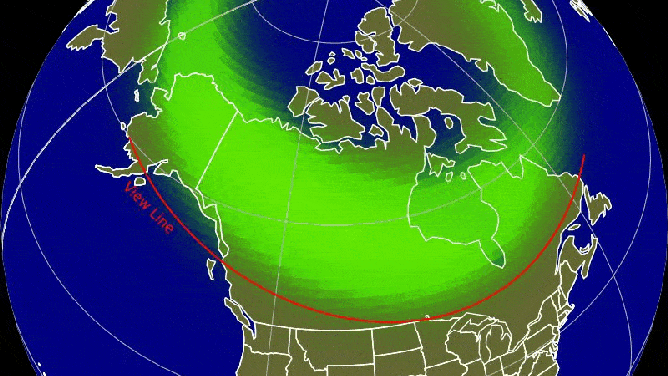
The aurora forecast.
(NOAA)
NOAA PREDICTS STRONGER PEAK OF SOLAR ACTIVITY IN 2024 THAN ORIGINALLY ANTICIPATED
When will solar activity peak?
The geomagnetic storms and associated aurora activity are ramping up because the Sun's activity is increasing as it approaches the Solar Maximum during an 11-year solar cycle. That gives everyone a better chance at seeing the aurora.
Solar Maximum isn't a one-day or even a week-long event. It's ongoing and can even take years.
"The peak is not sharp. It's not like it goes way up and then comes back down. It's kind of flat," Mark Miesch, solar cycle lead at SWPC said in an earlier interview.
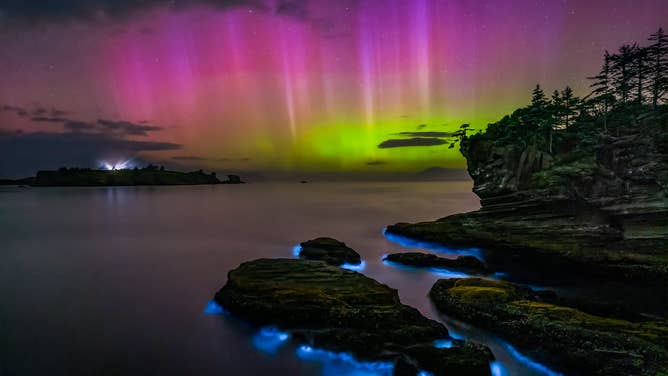
File: The Northern Lights shine atop a blue glow of bioluminescence at Cape Flattery, Washington on July 25, 2023.
(Mathew Nichols Photography / Facebook / FOX Weather)
Under the current prediction, Miesch said the next two years will see more geomagnetic storms and aurora than we've seen in 20 years, or since Solar Cycle 23, which peaked in 2001.
Miesch said even though Solar Cycle 25 is stronger than initially predicted, it will still likely be below average. However, that doesn't mean it's less critical because space weather can impact the technology we use in our daily lives, like GPS.
"The Sun is about the same, but society keeps changing," Miesch said.
WHAT IS THE 11-YEAR SOLAR CYCLE?

File: Eruptions leaving the sun in mid-August.
(NASA)
During the last time solar activity was this high in 2001, the world was a different place.
"iPhones didn't exist and, now GPS, the satellites we've become more and more dependent on GPS, and it's even in places where you would not expect," Miesch said. "If a big solar storm took out GPS satellites, that would be a big deal."
